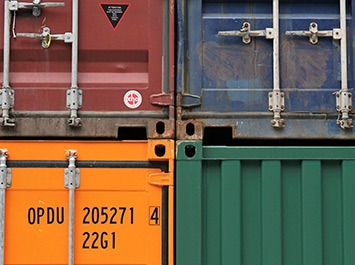
Technological trends in the retail industry in 2020 – Logistics
16 July 2020
There is no doubt that logistics is one of the most crucial areas of trade. What’s more, along with the development of retail chains (only in Poland, several stores are opened every day) and the migration of retail to the Internet, the importance of logistics is continuously growing, and more and more companies build their key competitive advantage on it.
But what is logistics? According to Filip Kotler, it is “planning, implementing and controlling the processes of physical movement of materials and products from one place to another”. A slightly more recent approach to the issue of logistics has been presented under the concept of SCM, i.e. Supply Chain Management. Regardless of the definition, it is worth remembering that, among others, continuous optimization and innovation in logistics were behind the success of giants such as Amazon or Walmart.
Logistics-mix
Logistics-mix is a fairly popular approach to the systematization of logistics issues. In the trade it includes:
- store warehouse,
- distribution center,
- transport,
- packing,
- communication.
What are the most interesting technological trends in this area?
In a store warehouse, innovations appear wherever it is possible to optimize this small, but also extremely expensive space. That is why we can see one crucial trend here. Improving the flow of information on demand and returns (so-called reverse-logistics), implementing DOM (Distributed Order Management) models, coordinating deliveries with other stores, reducing logistic minima – all these activities require modern IT solutions of the SCM class. In a word – there are no shortcuts.
Technology has a bit more to offer us at the distribution center level. From automation solutions (AutoID solutions, mobile pallet transport robots, stacker cranes, packaging robots), through solutions reducing global inventory levels, such as DSD (i.e. Direct Store Delivery), to systems enabling the transfer of storage costs to manufacturers using a consignment warehouse.
Transport also seems to have been undergoing a gigantic digital transformation for at least a decade. Traceability solutions make it possible to identify the product at every stage of production, storage, and transport by scanning an identifier (bar code, QR code, or an RFID tag) at every stage between the manufacturer and the final recipient. What’s more, there are already RFID-based solutions on the market that can measure the temperature (e.g. 5,000 entries) at specific intervals, and then store it in the memory of a micro-computer hidden in an inconspicuous sticker.
Packaging in trade logistics is the most technologically neglected area. Many issues are still very chaotic here, but some are taken care of quite well. One of them is solved by increasingly popular vision control systems based on machine vision and sensors. The camera can check if the package contains all the products specified in the order and if the address sticker is correct and stuck in the right place. It also allows you to weigh the shipment and automatically redirect it to the appropriate transport dock.
The information in logistics, on the one hand, controls all processes, and on the other hand, is collected at every stage of the movement and storage of goods. The amount of information generated in the entire logistics process is simply gigantic, and the ability to properly link pieces with each other becomes more and more important. That is why, in this area, BI and BigData systems turn out to be invaluable.
In retail and distribution, there are usually tons of processes that can be automated with the help of intelligent software. The fact is that logistics operators often have no influence on the form of data describing the goods. Foreign suppliers, official documents, lack of devices, or standards among process participants – all this makes Robotics Process Automation solutions so willingly used by entrepreneurs in their everyday activities.
Summary
As we can see, logistics is a huge area that not only has a lot to offer but above all… a lot to be optimized. A store warehouse, distribution center, transport, packaging, or communication are areas that are improved by technology in various ways – to a greater or lesser extent. However, these are also areas that are already arousing huge and growing interest. Areas where technology has definitely not said the last word yet.
The author of the article is Bartłomiej Łatka, an expert on retail and logistics.
back